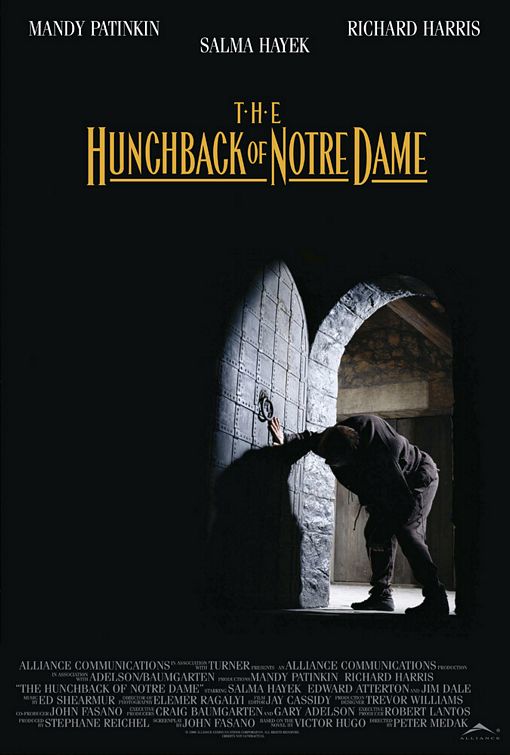
Image taken from Imp Awards.
I read this book a long time ago when I was a teenager, and had the opportunity of reading it again this year. As beautiful as the Disney film is, it cannot be compared to the book that inspired it.
Originally titled "Notre Dame de Paris", (Our Lady of Paris), the story was originally meant to be focused on the cathedral itself, and not entirely on Quasimodo; the change of focus is something that contemporary interpretations of the narrative have to thank for. And if you read the book carefully, you can see how everything that happens in the story is directly or indirectly connected with the cathedral, it in itself being the central character of the whole book.
Hugo uses his descriptions of the scenery of Paris in the 1480's and his descriptions of Notre Dame to share symbolically what the narrative is trying to teach us. It is a deeply thought-provoking book that comments on many political issues that are prevalent both in Hugo's day in in the times of Medieval Paris. Unfortunately, trying to briefly cover them all in this short review would not do the book any justice, so I recommend that the reader of this article seeks for himself/herself a copy of it to read for themselves.
The copy I read was the Wordsworth Classics edition, and is the one that I would strongly recommend, if it is available to you. It contains an introduction by Keith Wren, who delves into the political issues the book discusses in greater detail, and helps readers understand what Hugo was trying to say within those political debates. If this edition is not available, I am certain there are plenty of detailed online essays that also discuss the political issues of the book in greater detail.
A classic and a must-read for all Victor Hugo fans out there.
No comments:
Post a Comment